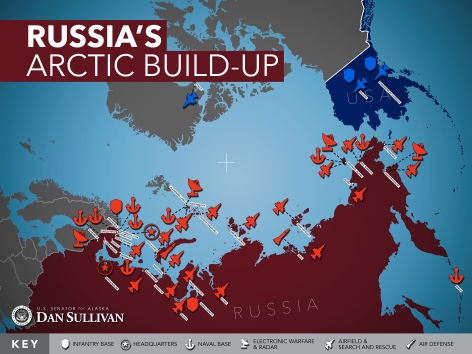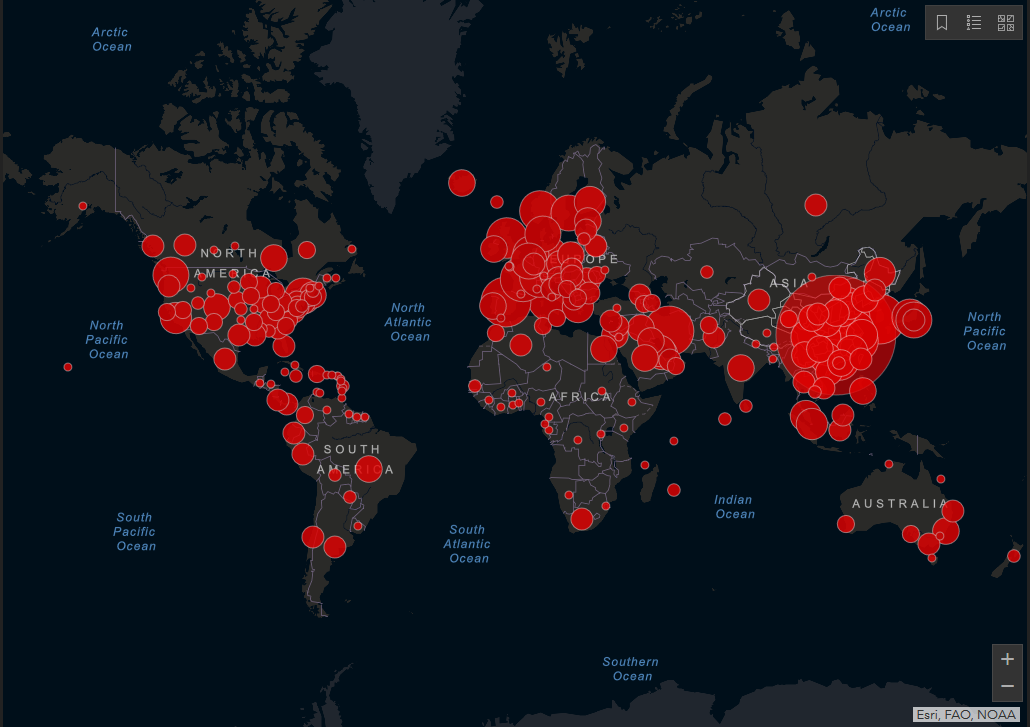 Last November, the ruling Sandinista National Liberation Front secured a resounding but dubious re-election victory that will enable President Daniel Ortega, his political powerfully wife Rosario Murillo, and their cronies to continue the “Nicaraguan Revolution,” which was interrupted by 16 years of pro-Washington government in Managua. Ortega can rely on Nicaragua’s surging economy and FSLN control over the Supreme Court, top electoral council, military, and national police to guarantee that he is never again ousted from power, as he was in the 1990 democratic election.
Last November, the ruling Sandinista National Liberation Front secured a resounding but dubious re-election victory that will enable President Daniel Ortega, his political powerfully wife Rosario Murillo, and their cronies to continue the “Nicaraguan Revolution,” which was interrupted by 16 years of pro-Washington government in Managua. Ortega can rely on Nicaragua’s surging economy and FSLN control over the Supreme Court, top electoral council, military, and national police to guarantee that he is never again ousted from power, as he was in the 1990 democratic election.
While many dissidents, like the Sandinista Renovation Movement, contend that Ortega has betrayed the party’s original socialist principles, “Comandante” still walks and talks like a communist. Following his return to power in 2007, he revitalized Nicaragua’s links with Russia and international pariah states like North Korea, Iran, and Cuba; denounced NATO intervention against his old friend Muammar al-Qaddafi; referred to Colombia’s Marxist guerrillas as ideological “brothers”; accepted drug money from Hugo Chavez’s narco-state in Caracas; and closed ranks with new leftist regimes in Bolivia, Ecuador, and El Salvador.
Apparently, though, Ortega will no longer be able to rely on the comradely support of Tomas Borge Martinez, the only surviving founder of the FSLN and Nicaragua’s dreaded interior minister during the civil war years. Following surgery, the 82-year-old Maoist has been placed in the intensive care unit at Managua’s military hospital. According to a government spokesman, Ortega is receiving twice hourly reports on Borge’s medical condition.
“Commander of the Revolution” Borge was one of the leading figures of the Soviet/Cuban-backed insurrection that toppled the dictatorship of Anastasio Somoza in 1979, inspiring an entire generation of US baby boomer leftists such as musician Jackson Browne, and globalists like CNN mogul Ted Turner. In the 1980s, Ortega and Borge permitted Colombian drug lord Pablo Escobar to set up trafficking operations in Nicaragua, prompting an angry response from US President Ronald Reagan. In 2007, Ortega appointed Borge as Nicaragua’s ambassador to Peru.
On March 30, Ortega and the presidents of El Salvador and Honduras, Mauricio Funes and Porfirio Lobo, converged in San Salvador to retool a trilateral accord, first inked in 2007, that would transform their common border area in the Gulf of Fonseca into a “zone of peace, sustainable development, and security.” Referring to the Central American Integration System (SICA), the three presidents expressed their objective “of deepening and expanding relations of brotherhood, understanding and cooperation, in the framework of a Central American process of integration, and to increase unity.” Cuba’s Prensa Latina reports: “Taking into account historical disputes that have even led to the loss of human lives, the dignitaries expressed the ‘commitment of favoring dialogue and negotiation to solve any conflict and to never use a military solution.’”
For his part, Ortega is a veteran KGB asset and pro-Moscow communist who repackaged himself as a “devout son” of the Roman Catholic Church in 2006 in order to slide into the presidency again. Although he did not take up arms during the Salvadoran Civil War, social democrat Funes is the moderate face of the ruling Farabundo Marti National Liberation Front. However, Vice President Salvador Sanchez Ceren, a “doctrinaire Leninist,” former FMLN battlefield commander and assassination mastermind, is widely perceived as El Salvador’s real ruler. In Honduras, center-right president Porfirio Lobo Sosa plays the role of agricultural landowner even as he skirts the issues of his past communist party membership and attendance at the KGB’s terrorist training institute, Patrice Lumumba University. In 1992, PLU was renamed as the People’s Friendship University of Russia.
Regional integration is the cause celebre of the post-Cold War Latin American Left, which controls the majority of governments in the Western Hemisphere. Venezuela’s self-avowed communist dictator Chavez is a prime mover in this field, but should he succumb to the cancer that has plagued him since at least last year or fail to run in or clinch October’s presidential election, Latin America’s Red Spread could falter.
The Ortega-Funes-Lobo tete-a-tete on regional security is curious in light of the fact that the same leaders bailed out of a March 24 summit in Guatemala that would have brought together six Central American presidents to tackle the issue of illegal drugs transiting through the region. Attendees at the previous meeting included Costa Rica’s Laura Chinchilla, Panama’s Ricardo Martinelli, and Guatemala’s Otto Perez Molina, a former general and veteran of the country’s Cold War-era counter-insurgency campaign. Perez was elected last year on a platform that promised to get tough on the drug cartels.
Interestingly, from the point of view of the Soviet strategic deception, both regional counter-narcotics summits follow Viktor Ivanov’s February tour of the region. Career Chekist Ivanov is the Kremlin’s “drug czar.” His tour included pit stops in Nicaragua, El Salvador, Cuba, Panama, and Mexico. In his 1990 treatment of the subject, Red Cocaine, terrorism and security expert Joseph Douglass contends that in the early 1960s the Soviets and Red Chinese—with the subsequent help of the Cuban Communists, Sandinistas, and Panamanian strongman Manuel Noriega—hatched a scheme to drown the USA in illicit drugs. The plot seems to have worked with amazing success. The “War against Drugs,” launched by President Richard Nixon 40 years ago, is a massively expensive failure.
In a related story, last July Argentine folk singer Facundo Cabral was gunned down in Guatemala as Nicaraguan businessman Henry Farinas drove the 74-year-old musician to the airport. Two weeks ago, Nicaraguan authorities revealed that the actual target of the gunmen was Farinas, who survived and now faces drug trafficking charges.
Police allege that Farinas worked for a Mexico-linked cartel known as Los Charros, which was recently busted in Nicaragua and Costa Rica. He also allegedly collaborated with a Colombian drug gang called Los Fresas. Police specifically accuse Farinas of shipping drugs from Costa Rica to Nicaragua for Los Charros. He may have kept some of the drugs or drug money, leading to the botched attack that killed Cabral.
In mid-March, Colombian authorities arrested a Costa Rican man, who may be working for Mexico’s powerful Sinaloa drug cartel, on charges of carrying out the fatal ambush in Guatemala. Fernando Alejandro Jimenez Gonzalez was extradited to Guatemala but has since declared his innocence. Colombian police, citing information gathered by Costa Rican security agencies, posit that Jimenez could be a link between the Sinaloa cartel, which is headed by drug lord Joaquin “El Chapo” Guzman, and suspected Colombian traffickers.
Cabral was shot to death on July 9, 2011, after performing a concert in Quetzaltenango, a city 120 miles west of Guatemala City.
Meanwhile, Mexico’s center-right government, which faces a general election this July, is endeavouring to mend relations with Cuba that “went south” after the National Action Party (PAN, Panistas) won the presidential election in 2000. This political breakthrough followed 70 years of uninterrupted rule, under several different names, by the centrist/ social democratic Institutional Revolutionary Party (PRI, Pristas).
Earlier this week Mexican President Felipe Calderon put in an appearance in Havana, where he met with Cuban counterpart Raul Castro (pictured above). President Castro, who succeeded older brother Fidel in 2008, has introduced market reforms into Cuba’s struggling Soviet-style command economy. According to Mexican press reports, the two presidents will discuss Cuba’s debt of more than US$400 million to Mexico, the possibility of joint oil ventures in the Gulf of Mexico, and business opportunities for Mexican companies.
Unlike the hegemonic PRI, Vicente Fox took a dim view toward the communist island state’s human rights record, a position that did not sit well with then-dictator Fidel. The rancor spilled over in 2002 when Fox ordered Fidel to leave a Mexican-hosted summit before US President George W. Bush arrived. Fidel, now 85, taped and later publicized the conversation, which generated an embarrassing controversy for Fox. Tensions between Mexico and Cuba continued under Fox’s fellow Panista Calderon, who in 2009 cancelled a scheduled visit to the island when Cuba suspended flights between the two countries at the height of the swine flu scare.
After conferring with Cuba’s communist dictator, Calderon headed for Haiti on Thursday, and then attended the Summit of the Americas in Colombia on Friday. In Cartagena, he will no doubt rub elbows with Barack Hussein Obama. The US president, predicts Bloomberg, “will be under fire from Latin American leaders frustrated with the U.S-led war on drugs and attempts to isolate Cuba when he arrives this week in Colombia for a regional summit.”
Since most public opinion polls suggest that Prista candidate Enrique Pena Nieto will win Mexico’s presidential election in July, it is very likely that the historically friendly relations between Mexico City and Havana will be fully restored. During the Cold War, Mexico was unwaveringly supportive of Cuba. This does not appear to have changed since the collapse of the Soviet Union. For example, Humberto Moreira, PRI boss until his resignation amid corruption allegations last December, led a cultural delegation to Cuba in 2007, while he was governor of the state of Coahuila.
The infiltration of Mexican politics by Cuban (and Soviet) intelligence, of course, took place decades ago. According to José Antonio Pérez Stuart, a Mexican investigative reporter, Cuban agents have more recently penetrated the Mexican drug cartels with the intent of infiltrating communists and/or communist sympathizers into the political system.
In 2010, for example, Gregorio “Greg” Sánchez Martínez, former Cancun mayor and Democratic Revolutionary Party (PRD) candidate for the Quintana Roo state governorship, was arrested for money laundering and trafficking in illegal immigrants. Sánchez Martínez’s wife, Niurka Alba Sáliva Benítez, was also involved in infiltrating Cuban, Russian, and Chinese illegals into the USA via Mexico. Niurka is none other than the daughter of Cuban Interior Minister Colonel José Ángel Sáliva Pino, who has always been close to Fidel and Raul.
Sánchez Martínez’s advisor Boris “El Boris” del Valle Alonso was not only linked to the criminal organization Los Zetas, but also worked with Niurka by keeping tabs on the income generated from undocumented aliens. El Boris was the Cancun mayor’s advisor because of the former’s experience as a Cuban soldier in the Angolan Civil War. El Boris is also the son of ex-Cuban Interior Minister Sergio del Valle, who in turn is the brother-in-law of Sánchez Martínez because Sergio is Niurka’s half-brother. El Boris is also related to Fidel Castro’s wife, Dalia Soto del Valle.
PRD leader and past/present presidential candidate Andres Manuel Lopez Obrador is outspoken in his admiration of Fidel Castro.







